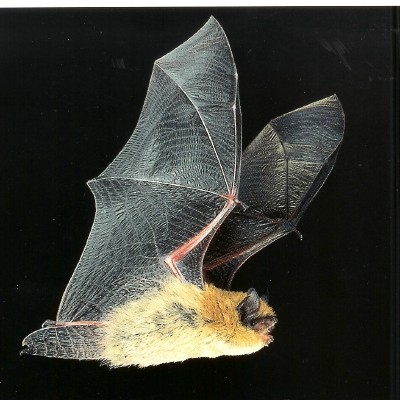
Cabeza Prieta Natural History Association
Sonoran Desert Mammals

California myotis
(Myotis californicus stephensi)

|
Diet: small flying insects, primarily flies, moths and beetles
Size: weight 3-5 grams (0.1-0.2 ounce) wingspan 22-26 centimeters (9-10 inches) Active Period: nocturnal |
The California bat is one of the smallest bats in the United States. Its habitat is from sea level to 5,940 feet elevation and usually occurs in the vicinity of water.
Individuals emerge shortly after sunset to forage, which continues at irregular intervals until dawn. Its flight is slow and erratic and it hunts primarily along margins of tree clumps, around the edge of the tree canopy, over water, and well above ground in open country. Its foraging strategy consists of locating and feeding in concentrations of insects where its slow maneuverable flight allows it to capture several insects in quick succession over a short distance.
California bats roost in rock crevices, hollow trees and spaces under loose bark. The sexes roost separately during summer when females form small maternity colonies, but occur together September to March. They hibernate in caves and mines. Breeding takes place in autumn, and one baby is born in July. Life span is about 15 years.
It is common throughout its range.
This article is from "Bats of the United States", 1999, by Michael J. Harvey of Tennessee Technological University, J. Scott Altenbach of the University of New Mexico, and Troy L. Best of Auburn University. Published by the Arkansas Game & Fish Commission, in cooperation with the Asheville Field Office of the U.S. Fish and Wildlife Service.
Photo Credit:
Photo #1
Copyright Creative Commons
HTML & Programing by
Thomas R. Powell